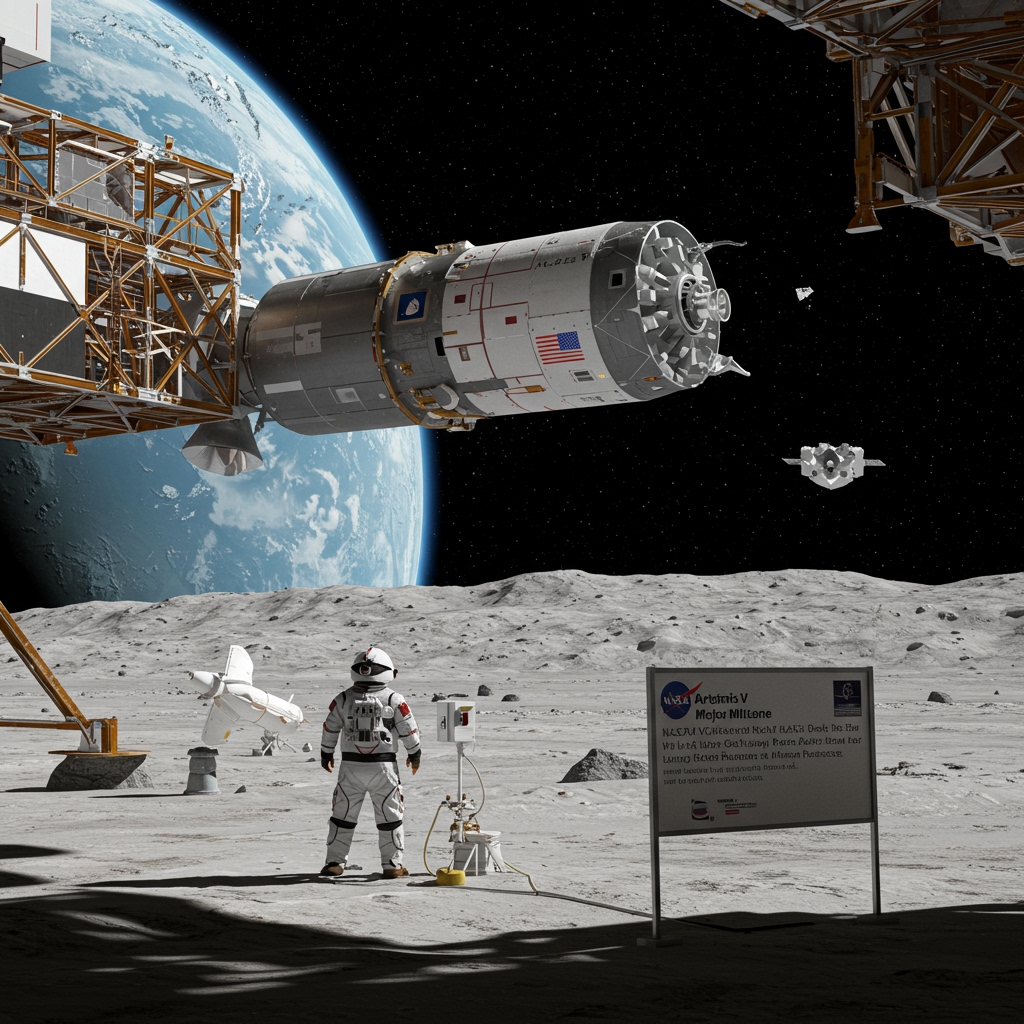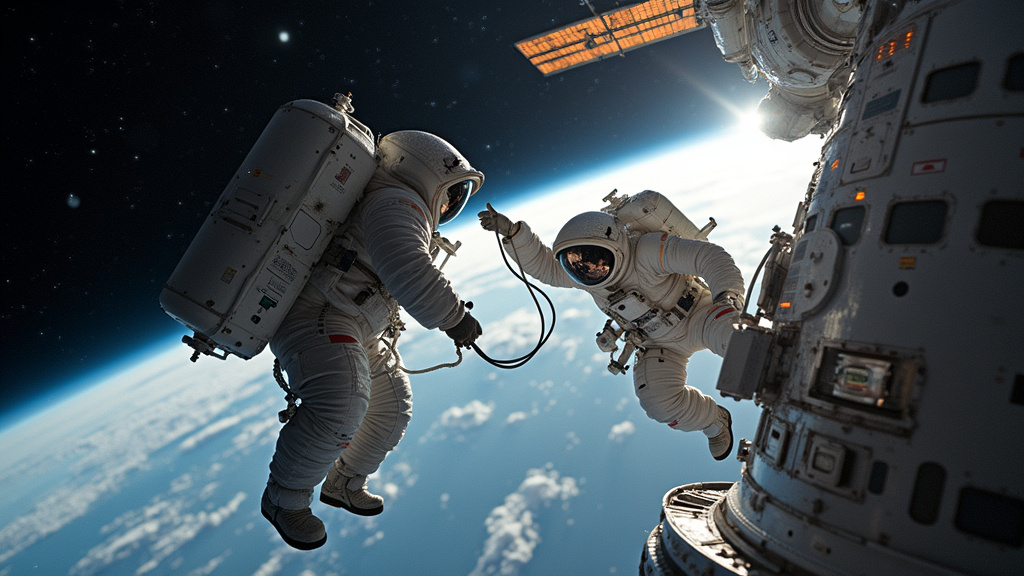NASA’s Orion Successfully Docks with Lunar Gateway: A Landmark Achievement for Artemis V
CAPE CANAVERAL, FL – In a pivotal moment for humanity’s return to the Moon, NASA today confirmed the successful docking of the Orion crew module with the Lunar Gateway station. This critical maneuver, completed at 14:30 UTC, represents a major milestone for the Artemis V mission, validating essential procedures for future lunar surface operations and solidifying the role of the Gateway as a key staging point for sustained exploration around the Moon.
The Orion spacecraft, carrying a two-person crew comprising Commander Sarah Chen and Pilot Ben Carter, executed the delicate docking procedure flawlessly. This event was met with palpable excitement at NASA’s mission control centers, signaling not just the technical prowess required for cislunar operations but also the continued progress of the ambitious Artemis program, which aims to establish a long-term human presence on and around the Moon.
A Critical Step in the Artemis Program’s Evolution
The Artemis V mission is a crucial step in NASA’s multi-phase plan to return astronauts to the lunar surface and eventually prepare for missions to Mars. While earlier Artemis missions focused on uncrewed tests and crewed lunar flybys, Artemis V is specifically designed to demonstrate the integration of key elements – the Orion spacecraft, the Lunar Gateway, and ultimately, lunar landers – necessary for repeatable, sustainable access to the lunar environment.
The successful docking serves as a vital validation of the navigation, rendezvous, and docking systems onboard Orion, as well as the compatibility and operational readiness of the Gateway’s docking ports. These procedures are fundamental to the entire Artemis architecture, enabling crew and cargo transfer between different components of the lunar ecosystem.
The Lunar Gateway: A Foundational Element
The Lunar Gateway, officially known as the Gateway, is an international collaboration designed to orbit the Moon, serving multiple critical functions. It is envisioned as a reusable command and service module, a science laboratory, and a communication hub. Importantly, it acts as a strategically positioned staging point for missions heading to or returning from the lunar surface.
By providing a persistent presence in lunar orbit, the Gateway significantly reduces the complexity and energy requirements of lunar landing missions. Astronauts traveling from Earth aboard Orion can dock with the Gateway, transfer to a lunar lander parked there, and descend to the surface. Upon completing their surface operations, they can return to the Gateway, transfer back to Orion, and begin their journey home.
The Gateway’s modular design allows for future expansion, accommodating additional international and commercial partners, scientific instruments, and habitation modules, further enhancing its capabilities as a cornerstone of lunar exploration infrastructure.
Crew Activities and Mission Objectives
Commander Sarah Chen and Pilot Ben Carter will spend approximately five days aboard the Lunar Gateway. Their primary tasks during this period include conducting comprehensive systems checks of both the Orion spacecraft and the Gateway module they are docked with. This involves verifying power systems, life support, communication links, and propulsion systems.
Another crucial activity is the transfer of supplies. The Orion spacecraft carried essential cargo, including provisions for the crew, scientific equipment, and potentially spare parts for the Gateway itself. The successful and efficient transfer of these materials is a key operational demonstration, validating logistics procedures vital for long-duration missions at the Gateway and on the lunar surface.
This five-day integrated phase allows the crew and ground control teams to gain invaluable experience working with the combined Orion-Gateway configuration, identifying any unforeseen operational challenges and refining procedures for future, longer crewed stays aboard the Gateway and subsequent lunar landings.
Looking Ahead: Solo Lunar Orbit and Surface Operations
Following the completion of their five-day stay and transfer operations, Commander Chen and Pilot Carter will undock the Orion crew module from the Lunar Gateway. Orion will then perform a series of maneuvers to enter a solo orbit around the Moon.
While the immediate Artemis V mission does not involve a lunar landing from this specific Orion flight – that is planned as the subsequent phase utilizing a different lander module that will rendezvous with the Gateway – the solo lunar orbit insertion by Orion is another vital test. It demonstrates Orion’s independent capabilities in the deep space environment around the Moon, including navigation, propulsion, and life support for extended periods away from a station.
The overall success of Artemis V, including this critical docking event and the subsequent solo operations, directly contributes to the readiness for planned lunar surface operations later this year. These operations will involve the arrival of a lunar lander at the Gateway, followed by a crew transfer and descent to the lunar surface, marking humanity’s return to walking on the Moon after decades.
Paving the Way for Sustainable Presence
The docking of Orion with the Lunar Gateway is more than just a technical achievement; it is a symbolic and practical leap forward in NASA’s strategy for establishing a sustainable presence around and on the Moon. By utilizing the Gateway as a reusable staging point, Artemis missions become more flexible, efficient, and capable of supporting longer surface expeditions and a continuous cycle of operations.
This infrastructure-focused approach stands in contrast to the Apollo era’s direct-to-surface model and lays the groundwork for not just lunar exploration but also potential future missions to deeper space destinations, using the Gateway as a stepping stone and a testing ground for technologies and procedures required for journeys to Mars and beyond.
The successful docking at 14:30 UTC today confirms the viability of this approach and reinforces the global commitment to lunar exploration as the next frontier for human spaceflight. Commander Chen, Pilot Carter, and the entire Artemis team have taken a momentous step toward making sustainable lunar presence a reality.





